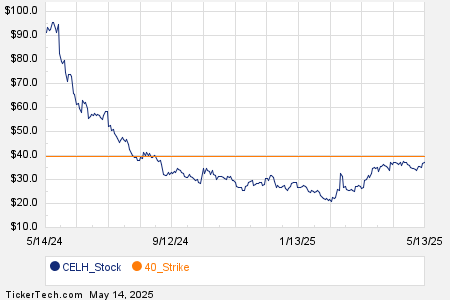“`html
Crude Oil Prices Decline Amid Rising Inventories and Geopolitical Shifts
June WTI crude oil (CLM25) is trading down -0.67 (-1.05%), while June RBOB gasoline (RBM25) decreased by -0.0026 (-0.12%).
Market Moves and Influences
Today’s crude oil and gasoline prices are lower, following an unexpected increase in weekly EIA crude inventories. Additionally, President Trump’s comments about pursuing a nuclear deal with Iran, potentially lifting sanctions on Iranian crude exports, have further pressured prices. A weaker dollar is helping to limit losses for crude.
Geopolitical Factors Impacting Prices
Reduced geopolitical risks in the Middle East are negatively affecting crude prices. President Trump mentioned halting U.S. bombing campaigns against Houthi rebels in Yemen after a ceasefire agreement brokered by Oman. Furthermore, Vice President Vance indicated last Wednesday that a nuclear deal with Iran could reintegrate the nation into the global economy.
On a positive note, crude oil found some support on Tuesday due to the expectation of reduced global oil supplies. The U.S. State Department imposed sanctions on an international network responsible for facilitating the shipment of millions of barrels of Iranian oil to China. The targeted company, Sepehr Energy Jahan Nama Pars, allegedly used proceeds from crude sales to develop weapons.
Supply Agreements and Gasoline Demand
Recent announcements from OPEC+ indicate there may be additional production increases in the future, which could further impact crude prices. The coalition agreed to raise oil production levels by 411,000 bpd in June, with signals from Saudi Arabia suggesting more increases might follow. This strategy aims to reduce excess oil and hold overproducing members accountable.
On the demand side, a positive outlook for U.S. gasoline consumption supports crude prices. The American Automobile Association projects that 39.4 million Americans will travel by car this Memorial Day weekend, a 3.1% increase from last year. This optimism is fueled by gasoline prices being approximately 50 cents per gallon cheaper than one year ago.
Current Inventory Data and Future Outlook
Crude prices recently hit a five-week low due to concerns about a global oil surplus, largely driven by OPEC+ output increases. OPEC+ aims to reverse a two-year production cut, gradually restoring a total of 2.2 million bpd. These production levels are unlikely to fully recover until September 2026.
Bearish indicators include a reported 11% increase in crude oil stored on tankers, which rose to 93.32 million barrels in early May. Conversely, U.S. sanctions on Russia’s oil industry, targeting key exporters such as Gazprom Neft, may curb global supply, providing a supportive factor for crude prices.
Today’s EIA report presented mixed signals. While EIA crude inventories unexpectedly increased by 3.45 million barrels (versus expectations of a decrease), gasoline supplies saw a more significant decline of 1.2 million barrels, exceeding expectations. Additionally, EIA distillate inventories fell to a 20-year low, down by 3.2 million barrels.
As of May 9, U.S. crude oil inventories were 6.5% below the five-year seasonal average. Gasoline inventories were 2.8% lower, and distillate inventories were down 16.1% from the five-year average. U.S. crude oil production rose marginally by 0.1% to 13.387 million bpd, still below the record high.
Baker Hughes reported that the count of active U.S. oil rigs fell by 5 to 474 last week, just above the 3-1/4 year low of 472 rigs. The number of rigs has decreased significantly from a five-year high of 627 rigs noted in December 2022.
On the date of publication, Rich Asplund did not hold (either directly or indirectly) positions in any of the securities mentioned in this article. All information and data in this article is solely for informational purposes. For more information, please view the Barchart Disclosure Policy.
here.
The views and opinions expressed herein are those of the author and do not necessarily reflect those of Nasdaq, Inc.
“`


